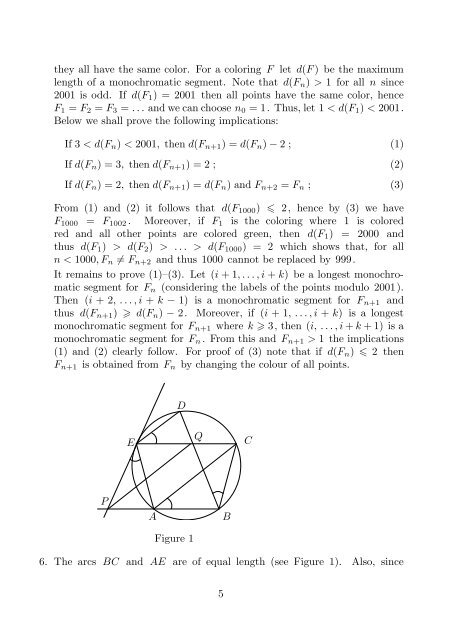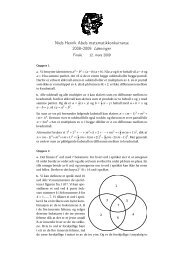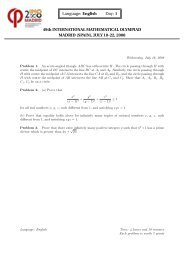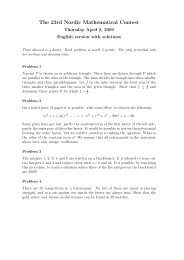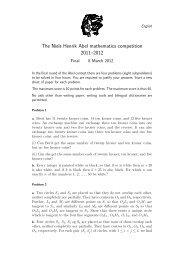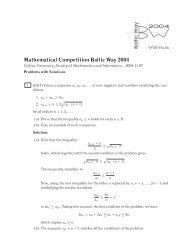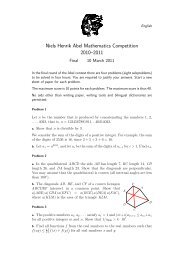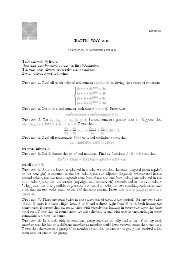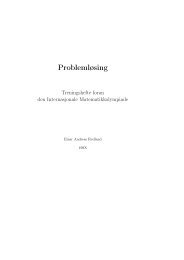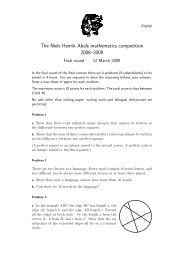Solutions - Georg Mohr-Konkurrencen
Solutions - Georg Mohr-Konkurrencen
Solutions - Georg Mohr-Konkurrencen
- No tags were found...
Create successful ePaper yourself
Turn your PDF publications into a flip-book with our unique Google optimized e-Paper software.
they all have the same color. For a coloring F let d(F ) be the maximumlength of a monochromatic segment. Note that d(F n ) > 1 for all n since2001 is odd. If d(F 1 ) = 2001 then all points have the same color, henceF 1 = F 2 = F 3 = . . . and we can choose n 0 = 1. Thus, let 1 < d(F 1 ) < 2001.Below we shall prove the following implications:If 3 < d(F n ) < 2001, then d(F n+1 ) = d(F n ) − 2 ; (1)If d(F n ) = 3, then d(F n+1 ) = 2 ; (2)If d(F n ) = 2, then d(F n+1 ) = d(F n ) and F n+2 = F n ; (3)From (1) and (2) it follows that d(F 1000 ) 2, hence by (3) we haveF 1000 = F 1002 . Moreover, if F 1 is the coloring where 1 is coloredred and all other points are colored green, then d(F 1 ) = 2000 andthus d(F 1 ) > d(F 2 ) > . . . > d(F 1000 ) = 2 which shows that, for alln < 1000, F n ≠ F n+2 and thus 1000 cannot be replaced by 999.It remains to prove (1)–(3). Let (i + 1, . . . , i + k) be a longest monochromaticsegment for F n (considering the labels of the points modulo 2001).Then (i + 2, . . . , i + k − 1) is a monochromatic segment for F n+1 andthus d(F n+1 ) d(F n ) − 2. Moreover, if (i + 1, . . . , i + k) is a longestmonochromatic segment for F n+1 where k 3, then (i, . . . , i + k + 1) is amonochromatic segment for F n . From this and F n+1 > 1 the implications(1) and (2) clearly follow. For proof of (3) note that if d(F n ) 2 thenF n+1 is obtained from F n by changing the colour of all points.DPSfrag replacementsEQCPAFigure 1B6. The arcs BC and AE are of equal length (see Figure 1). Also, since5


